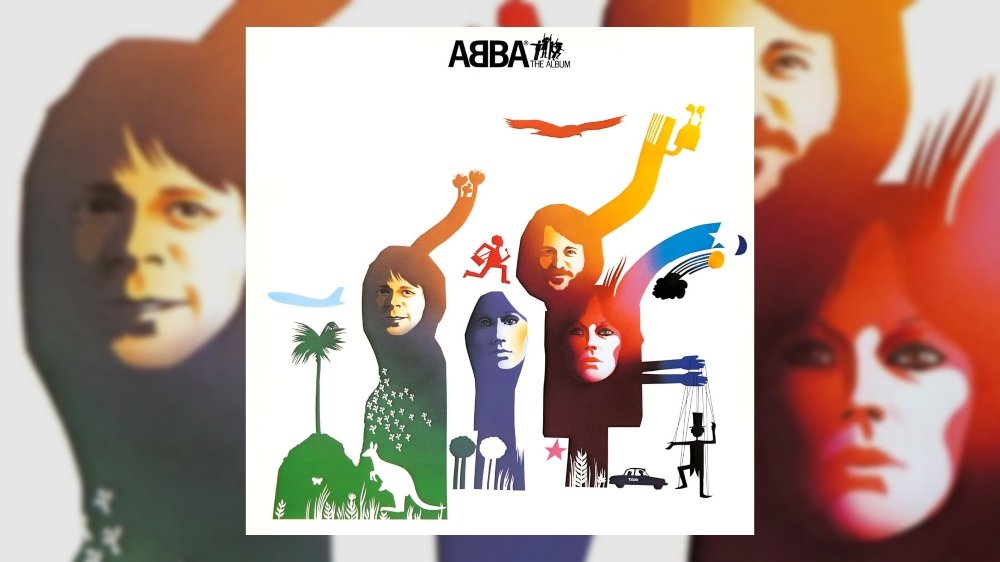Happy 45th Anniversary to ABBA’s fifth studio album ABBA: The Album, originally released December 12, 1977.
As an Amazon affiliate partner, Albumism earns commissions from qualifying purchases.
By 1976, ABBA had taken over the world. “Dancing Queen,” the first single from their fourth album Arrival, would take the group from the television stage of American Bandstand to the performance hall where they commanded the attention of their own country's aristocracy and royal class. Flashback for a moment to 1974 when the Eurovision Song Contest propelled “Waterloo,” the title track to their second album, into the global consciousness. The lives of these four Swedes—Agnetha Fältskog, Björn Ulvaeus, Anni-Frid (Frida) Lyngstad, Benny Andersson—literally changed overnight.
To meet demand, ABBA embarked upon their first major tour in Norway in January of 1977. It concluded in March of that year in Australia. The live shows Down Under confirmed “ABBA-Mania,” and it was during this interval that the germination of ABBA: The Album began. Recording officially started in May 1977, wrapping that November.
ABBA's big, bright pop—written, arranged and produced by Ulvaeus (rhythm guitar) and Andersson (piano, keyboards), but primarily brought to vocal life by Fältskog and Lyngstad— had evolved by leaps and bounds. ABBA: The Album served as the doorway between ABBA's first four albums and the three that followed in the next few years, as it correlated to the quartet's advancing musical tone, texture and temperament.
Several of the sonic ingredients present in ABBA: The Album weren't unfamiliar to the four-piece. Rock & roll had been hiding in plain sight on non-single sides from Waterloo (1974) and ABBA (1975); same goes for the theatre friendly facets too. This time, ABBA drew the fire to stoke these genres from American sources inspired from recent visits there, specifically California, during the promotional tasks for Arrival. Already staunch Beach Boys followers, ABBA also took interest in the then-modern California pop-rock acts like the Eagles and Fleetwood Mac, to name a few. They were also soaking up the general R&B scene stateside as well.
All of these things were incorporated into their own European pop setup. Songs like “Eagle,” “Move On” and “Hole in Your Soul” swing from sprawling road rock to vintage beach party kitsch. ABBA's use of layered synths and live instrumentation are all keyed to their keen melodic frequency. “Take a Chance on Me” and “The Name of the Game” are the record's great pop grooves, their rhythmic undercurrents more pronounced than ever before.
The closing section of the album centers on a mini-musical originally performed on their tour earlier in 1977, “The Girl with the Golden Hair.” Four songs round out the song suite—“Thank You For the Music,” “I Wonder (Departure),” “I'm a Marionette” and “Get on the Carousel.” The songs attempt to sketch a portrait of a young woman's rise to fame, her fall and the eventual conflict resolution.
Watch the Official Videos (Playlist):
While the songs were the only point of critical ire aimed at the universally praised tour, ABBA still felt the songs could work in a studio environment. Only “Get on the Carousel” did not make the cut, but the remaining three songs sit comfortably next to the European-pop retrofits of rock and R&B Americana on ABBA: The Album.
“Thank You for the Music” is a Fältskog knockout, instantly sentimental due to her sweet, sympathetic tone. “I Wonder (Departure)” is an equally big number, majestic in its lyrical and arrangement scope. Lyngstad's voice, velvet rich, conveys every iota of emotion. In fact, it complements the strongest composition, lyrically speaking, on the album that Lyngstad also takes the lead on, “One Man, One Woman.” Love songs weren't atypical of ABBA, but for the first time the group's songwriting exposes the reality of the peaks and valleys in an adult relationship. It was no secret that two couples comprised ABBA, Fältskog and Ulvaeus were married and Lyngstad and Andersson were engaged. But the heavier subject matter of “One Man, One Woman” went on to emerge as a prominent, albeit darker, theme in ABBA's next three albums.
ABBA: The Album was put forward on December 12, 1977 in Sweden in conjunction with its companion film à clef ABBA - The Movie. The cinematic excursion, an eventual cult classic, was centered around the Australian leg of their 1977 tour. ABBA: The Album went on to enter the remaining international markets in January 1978.
On the back of its four international singles released from late 1977 through to 1978—“The Name of the Game,” “Take a Chance on Me,” “Eagle,” “Thank You for the Music”— ABBA: The Album catapulted into the Top 10 of nearly every album chart conceivable. Gold and platinum certifications came shortly thereafter. If the critical reception to ABBA: The Album was mild at the time of its unveiling, the four-piece got the last laugh in 1992, the year that saw a massive reassessment of their discography and its impact. It was from then on that the notion of ABBA as a “textbook pop act” was just that, a notion, and a disproven one at that.
Within the ABBA canon itself, ABBA: The Album was the transitional switch between the carefree airs of their earlier fare and their sophisticated second phase offerings. But this particular bridgework is special. Unlike most liminal albums, ABBA: The Album did not just connect both sides of the ABBA catalog for a moment. It managed to house all of those aural effects in one space.
As an Amazon affiliate partner, Albumism earns commissions from qualifying purchases.
LISTEN:
Editor's note: this anniversary tribute was originally published in 2017 and has since been edited for accuracy and timeliness.

